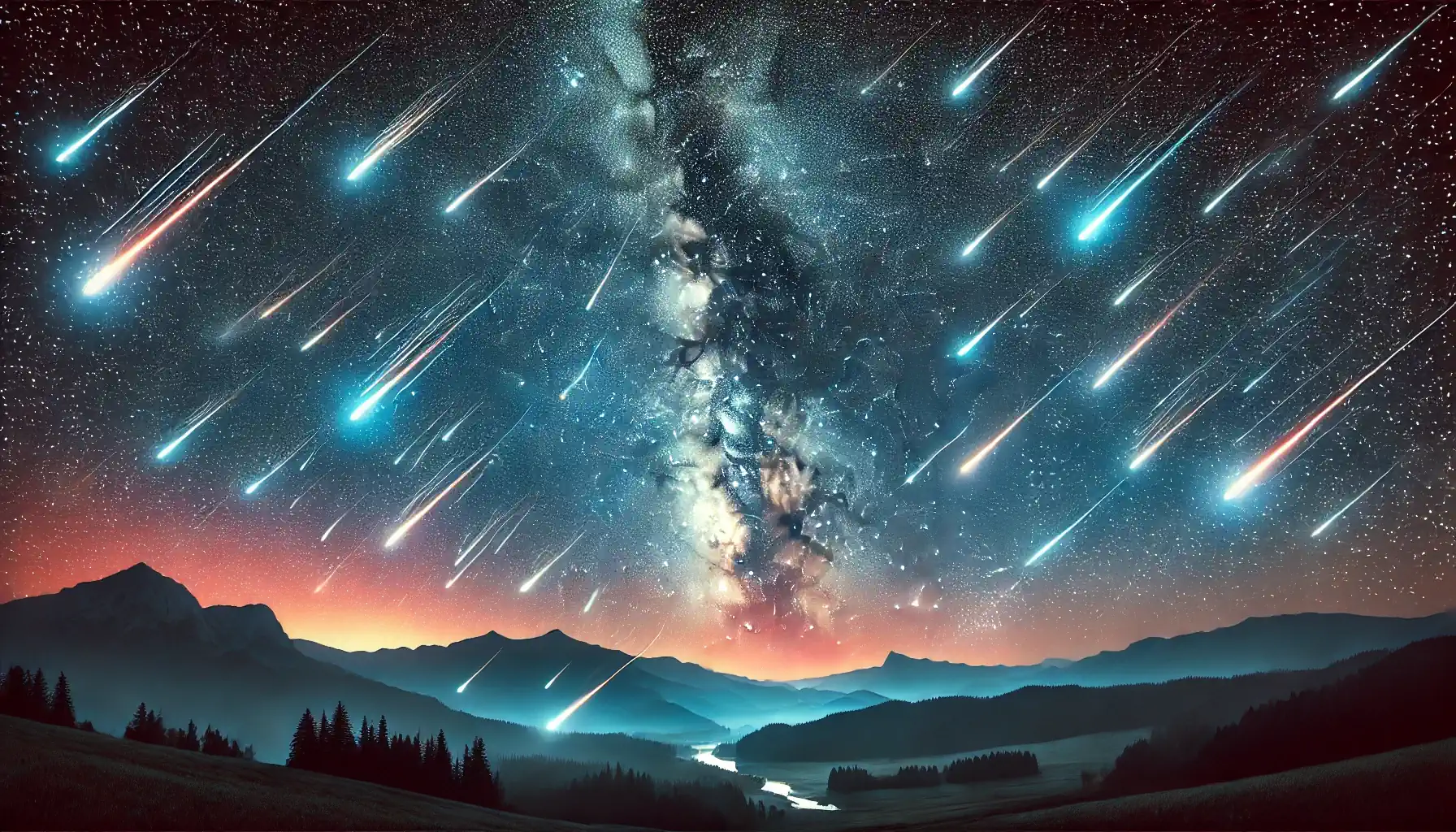
Best viewed: 12-13 August 2023
If there’s only one meteor shower you watch this year, make sure it’s the Perseids. Get ready for hundreds of bright meteors and the occasional fireball!
What is the Perseid meteor shower?
- Every year, the Earth goes once around the Sun. And every August, the Earth crashes into a cloud of debris left behind by the comet Swift-Tuttle. As the debris burns up in the Earth’s atmosphere, it produces the meteor shower that we call the Perseids.
- At its peak, the Perseids can produce an amazing 150 meteors per hour (that’s one every 20-30 seconds!). They’re usually bright with long trails and there’s also a good chance of seeing one that becomes a fireball.
The brightest confirmed Perseid fireball reaching -7 magnitude
When is the best time to see the Perseid meteor shower in 2022?
- The best time to see the Perseids in 2023 is late Saturday 12th August (close to midnight) or early Sunday 13th August (before dawn).
- Viewing conditions are good for 2023, with the Moon being only 10% full on 12th August.
- However, the Perseids will start appearing from 17th July, so keep your eyes peeled. The number of meteors will increase steadily each night until their peak on 12-13th August and then drop off rapidly before finishing completely by 24th August.
How to See the Perseid Meteor Shower from the UK
To view the Perseid meteor shower from the UK, no special equipment is needed, but some preparation is beneficial.
- Check the Weather: Look at the weather forecast. If cloudy, try observing a day or two before the peak.
- Find a Dark Location: Choose a dark, safe spot with a wide view of the sky, away from buildings, trees, and street lights.
- Adapt Your Eyes: Turn off all lights, including phones and torches, for 15 minutes to let your eyes adjust to the darkness. Use a red filter on your torch if necessary.
- Stay Comfortable: Dress warmly and bring a reclining chair. Viewing can last for many hours, so comfort is key. Refreshing beverages can enhance your experience.
If you are planning to take pictures of meteors, Mary McIntyre has some very useful tips for you on how to take better meteor pictures.
Another great way to watch the Perseids is to buy or build yourself a meteor camera. You’ll be able to create amazing time lapse videos like the one below and join the UK network of over 200+ meteor cameras. You don’t need any previous experience and it’s a great project to do with your kids or students!
Fun facts about the Perseid meteor shower
- They’re called the Perseids because the meteors seem to come from the constellation of Perseus. However, they’re actually caused by the Earth crashing into debris left behind by the comet Swift-Tuttle.
- The Perseids had been observed for thousands of years but it was Giovanni Schiaparelli in 1862 who realised the connection between comets and meteor showers.
- The average speed for a Perseid meteor is 36 miles per second (that’s 129,600 miles per hour!). The air in front of the meteor is squashed and heated to thousands of degrees Celsius. The smaller meteors vaporise and leave behind a bright trail but larger meteors can explode as fireballs.
- Perseus was the Greek hero who beheaded Gorgon Medusa and later married Andromeda. They had nine children together and the word ‘Perseids’ is derived from the Greek word ‘Perseides’, which refers to their descendants.